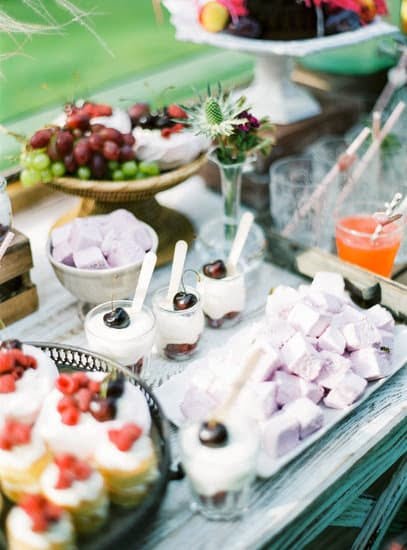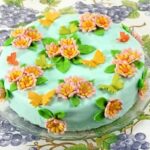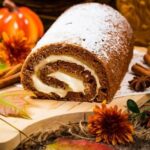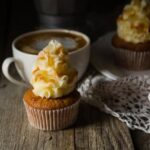Are you wondering how to decorate cake icing? Cake icing is not only essential for creating a smooth surface on your cake but also plays a significant role in the overall appearance and taste of the dessert. A beautifully decorated cake can make any special occasion more memorable, whether it’s a birthday, wedding, or other milestone celebration.
Different types of cake icing offer unique decorative features, from the smooth and creamy texture of buttercream to the elegant and versatile properties of fondant. Understanding the characteristics and techniques for each type can help you achieve the desired look for your cake.
In this article, we will explore the various types of cake icing, essential tools and materials needed, preparation tips, basic and advanced icing techniques, adding embellishments, and troubleshooting common issues that may arise during the decorating process. By the end of this comprehensive guide, you’ll feel more confident in your ability to create stunning cake decorations for any occasion.
Types of Cake Icing
When it comes to decorating a cake with icing, there are several options to choose from. Each type of cake icing has its own unique characteristics and can create different decorative effects. Here are the most common types of cake icing:
1. Buttercream: Buttercream is a classic choice for cake decoration due to its creamy texture and versatility. It can be easily colored and piped into various designs, making it ideal for creating intricate patterns and borders on cakes.
2. Fondant: Fondant is a smooth, pliable icing that can be rolled out and draped over the cake to create a flawless, polished look. It is perfect for creating sculpted cake decorations, such as flowers, bows, and figures.
3. Royal Icing: Royal icing dries to a hard, matte finish and is often used for delicate decorative details like lacework, intricate piping designs, and creating edible “glue” for assembling gingerbread houses or constructing ornate structures on cakes.
4. Ganache: Ganache is made from chocolate and heavy cream, resulting in a rich and glossy icing that can be poured over cakes for a smooth finish or whipped into soft peaks for frosting cakes with a textured appearance.
Learning how to decorate cake icing involves understanding the unique properties of each type of icing and how they can be used to achieve different decorative effects. Whether you’re aiming for a rustic buttercream finish or an elegant fondant design, choosing the right type of icing is essential for bringing your creative vision to life.
Essential Tools and Materials
When it comes to decorating a cake with icing, having the right tools and materials is essential for achieving professional-looking results. Piping bags are a must-have for any cake decorator, as they allow for precise icing application and come in various sizes for different design possibilities.
Coupled with piping tips, decorators can achieve a range of designs from simple lines to intricate shapes and patterns. An offset spatula is also crucial for smoothing out the icing and creating a flawless finish on the cake.
In addition to these basics, investing in a turntable can make the cake decorating process much easier. A turntable allows decorators to spin the cake as they apply the icing, ensuring even coverage and smooth finishes. Furthermore, food coloring is an essential part of any decorator’s arsenal, as it allows for unlimited color combinations and creative possibilities when it comes to customizing icing shades.
Another important consideration when it comes to essential tools and materials for cake icing decoration is the use of quality ingredients. This includes using high-quality butter, powdered sugar, cocoa powder (for chocolate frosting), and vanilla extract for making buttercream frosting from scratch. Additionally, using good quality fondant or royal icing can make a significant difference in achieving beautiful decorations that not only look great but also taste delicious.
Overall, having the right tools and materials on hand is crucial when it comes to successful cake icing decoration. With these essential items at your disposal, you can confidently explore various techniques and create stunning designs that will impress guests at any special occasion.
Preparing the Cake
Before you start decorating your cake with beautiful icing, it is essential to properly prepare the cake to ensure a smooth and professional finish. Here are some tips on how to prepare your cake for icing:
1. Leveling the cake: To ensure that your cake has a uniform surface for icing, it is crucial to level it. You can use a long serrated knife or a cake leveler to carefully trim off any domed top and create an even surface.
2. Crumb coating: Once your cake is leveled, it’s time to apply a crumb coat-a thin layer of icing that seals in any loose crumbs and provides a smooth base for the final layer of icing. This step is especially important when working with light-colored icings, as it prevents unsightly crumbs from showing through.
3. Chilling the cake: After applying the crumb coat, place the cake in the refrigerator for about 15-30 minutes to allow the icing to set. This will make it easier to apply the final layer of icing without disturbing the crumb coat.
By following these steps, you can ensure that your cake is well-prepared for decorating with beautiful icing. Remember, proper preparation is key to achieving professional-looking results when decorating cakes.
Now that you’ve learned how to properly prepare your cake for icing decoration, let’s move on to exploring basic and advanced techniques for creating stunning designs with different types of icings.
Basic Icing Techniques
Smooth Icing
Achieving a smooth, flawless finish on a cake with icing is essential for professional-looking results. To achieve this, start by applying a thin layer of icing to the cake as a base coat. Use an offset spatula to spread the icing evenly across the top and sides of the cake. Once the base coat is set, apply a second layer of icing and use a bench scraper or smoothing tool to create a smooth surface.
Textured Icing
Adding texture to cake icing can add visual interest and dimension to your cake decorations. One popular technique is using a comb or textured frosting scraper to create patterns in the icing. Simply hold the tool against the side of the cake and gently spin the turntable while applying light pressure. This will create visually appealing textures in the frosting.
Creating Patterns With a Piping Bag
One of the most versatile ways to decorate cake icing is by using a piping bag. By attaching different tips to the piping bag, you can create various patterns and designs on your cakes. For example, using a star tip can create rosettes or swirls, while a round tip can be used for writing messages or adding borders. Experiment with different tips and techniques to create unique and beautiful designs on your cakes.
By mastering these basic techniques for decorating cake icing, you’ll be able to elevate your cake decoration skills and impress your friends and family at special occasions. With practice and patience, you’ll soon be creating stunning works of edible art that are as beautiful as they are delicious.
Advanced Icing Techniques
One of the most advanced techniques for cake icing decoration is creating delicate and realistic sugar flowers. These intricate decorations require patience and skill, but they can elevate a cake from beautiful to stunning. To create sugar flowers, you will need gum paste or fondant, flower petal cutters, thin foam pads, ball tools, and food coloring. It’s essential to practice shaping the petals and assembling the flowers before attempting to decorate a cake with them.
Another advanced technique for cake icing decoration is creating intricate piping designs. This involves using a piping bag fitted with different tips to create detailed patterns and designs on the surface of the cake. Common piping tips include round tips for outlines, star tips for borders or rosettes, and leaf tips for foliage. By mastering different piping techniques such as pressure control and movement, you can create visually stunning designs on your cakes.
Using Edible Glitter and Stencils
For those looking to add some extra flair to their cake decorations, edible glitter and stencils can be used to enhance the overall look of the icing. Edible glitter can be applied directly onto the icing for a shimmering effect, while stencils can be used to create intricate patterns or messages on the cake surface.
When using these advanced decorative elements, it’s important to exercise caution as too much glitter or an uneven stencil application can result in a messy appearance.
When learning how to decorate cake icing using these advanced techniques, patience and practice are essential. Experiment with different designs, colors, and textures to find what works best for you. With time and dedication, you’ll be able to create show-stopping cake decorations that will impress friends and family at any special occasion.
Adding Embellishments
When it comes to cake decoration, adding embellishments to the icing can take your creation to the next level. Edible pearls, sprinkles, fresh flowers, and other decorative elements can enhance the overall look of the cake and make it truly special for any occasion. Here are some creative ideas on how to embellish cake icing with different elements.
One popular way to embellish cake icing is by using edible pearls. These small, round pearls come in various colors and sizes and can be placed strategically on the cake to create a sophisticated and elegant look. Whether you want to create a classic design or a modern pattern, edible pearls can add a touch of glamour to your cake.
Sprinkles are another fun and versatile way to decorate cake icing. From colorful sprinkles for children’s birthday cakes to metallic or pearlized sprinkles for more formal occasions, there is a wide range of options available. Sprinkles can be used to create borders, patterns, or even entire designs on the cake’s surface.
Fresh flowers are a beautiful and natural choice for embellishing cake icing. When using fresh flowers on a cake, it’s important to ensure that they are pesticide-free and safe for consumption. Popular choices include roses, daisies, lavender sprigs, and baby’s breath. Fresh flowers can be placed as a simple arrangement on top of the cake or used as cascading decorations along the sides.
| Embellishment Type | Description |
|---|---|
| Edible Pearls | Small round pearls in various colors and sizes that add sophistication and elegance |
| Sprinkles | Colorful or metallic toppings that add fun and versatility to cake decoration |
| Fresh Flowers | Natural adornments such as roses, daisies, lavender sprigs that add beauty to any occasion |
Troubleshooting Common Issues
When decorating a cake with icing, it’s essential to pay attention to detail and troubleshoot any issues that may arise during the decoration process. Common problems such as air bubbles, color bleeding, and uneven icing can affect the overall look of the cake. However, with the right techniques and solutions, these issues can be easily addressed.
Air bubbles are a common problem when decorating cake icing. They can create an uneven texture on the surface of the cake and affect the overall appearance. To prevent air bubbles from forming in the icing, it’s important to properly prepare the icing by reducing its viscosity and consistency. This can be achieved by mixing the icing thoroughly before use and tapping out any trapped air from piping bags or squeezing bottles before applying it to the cake.
Color bleeding is another issue that can occur when using food coloring in icing decoration. This problem arises when different colors of icing bleed into each other, causing unsightly smudges or streaks. To prevent color bleeding, ensure that each layer of colored icing has fully set before adding another color on top. In addition, using gel-based food coloring instead of liquid food coloring can help reduce the risk of color bleeding.
Uneven icing is a common challenge faced when decorating cakes with multiple layers or intricate designs. It can result in an unprofessional finish and affect the overall aesthetic appeal of the cake.
One way to address this issue is by using a bench scraper or offset spatula to smooth out any uneven areas before proceeding with additional decorations. Additionally, allowing each layer of icing to chill and set properly before adding another layer can also help achieve a more even finish.
| Cake Icing Issue | Solution |
|---|---|
| Air Bubbles | Thoroughly mix icing and tap out air before applying |
| Color Bleeding | Allow each layer of colored icing to fully set before adding another color; use gel-based food coloring |
| Uneven Icing | Use bench scraper or offset spatula to smooth out uneven areas; allow each layer of icing to chill and set properly |
Conclusion
In conclusion, decorating cake icing is a crucial aspect of creating a visually stunning and memorable cake for special occasions. Whether it’s a birthday, wedding, anniversary, or any other celebration, the right cake decoration can truly elevate the dessert and add to the overall ambiance of the event.
Throughout this article, we have discussed the different types of cake icing, essential tools and materials needed for decoration, techniques for preparing the cake, basic and advanced icing techniques, adding embellishments, and troubleshooting common issues. By understanding these key points and mastering the art of cake icing decoration, readers can unleash their creativity and turn any ordinary cake into a work of art.
With the knowledge gained from this article on how to decorate cake icing, readers are encouraged to experiment with various designs, colors, textures, and embellishments to create unique and personalized cakes for their loved ones. Whether it’s incorporating intricate piping designs or using edible glitter and stencils to add flair to their cakes, there are endless possibilities to explore in the world of cake decoration.
So go ahead, let your imagination run wild and have fun creating beautiful cakes that will be remembered for years to come.
Frequently Asked Questions
How Do You Make Icing Look Pretty on a Cake?
Making icing look pretty on a cake requires some skill and creativity. One way to achieve a beautiful icing design is by using different piping tips to create various patterns and textures. Another option is to use food coloring to add vibrant colors or ombre effects to the icing.
What Kind of Icing Do You Use to Decorate a Cake?
When it comes to decorating a cake, the type of icing you use can make all the difference. Buttercream icing is popular for decorating cakes due to its smooth texture and ability to hold intricate designs. Fondant is another option that allows for sleek, flawless finishes and elaborate decorations.
How to Decorate Cake With Butter Icing for Beginners?
Decorating a cake with butter icing as a beginner can be a fun and rewarding experience. Start by practicing basic techniques like smoothing the icing with a spatula or piping simple borders around the edges of the cake. As you gain confidence, you can experiment with more advanced designs such as rosettes or ruffles.

Welcome to our cake decorating blog! My name is Destiny Flores, and I am the proud owner of a cake decorating business named Cake Karma. Our mission is to provide delicious, beautiful cakes for all occasions. We specialize in creating custom cakes that are tailored specifically to each customer’s individual needs and tastes.





